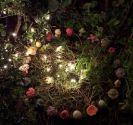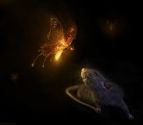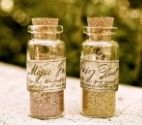Cat Chat (please go to cat chat 2)
Re: Cat Chat
I have 3 cats 2 black called lucy and her son figgy an one white one called zebedee!!
-
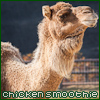
GreenEyedCat - Posts: 221
- Joined: Fri Aug 10, 2012 1:41 am
- My pets
- My items
- My wishlist
- My gallery
- My scenes
- My dressups
- Trade with me
Re: Cat Chat
Purrsian wrote:i've never heard of a cat that weighs thirty pounds with no wild blood unless it's overweight, but i guess a male F1 Savannah could achieve that weight.
Yeah, like most of the asian street cats look somewhat alike, and in the cat book poems the khao manee, si-sawat, and all the other cats look relatively the same, and all the british street cats look relatively the same (classic tabby pattern, cobby build) and african cats have the same look and build too. (many of them have pointed bicolor, and a heavyish but lighter than british shorthair build, like a sokoke.)
What's an arabian mau? (cross between Abyssinian and Egyptian mau?)
Wow sorry, I hadn't seen this til just now. The largest breeds (that I'm aware of) without wildcat blood are Maine Coon, Siberian, Norwegian Forest Cat, and Ragdoll. Maine Coons (intact males, that is. neutered males tend to be lighter) can get up to about 25lbs on average, meaning some are even larger than that! Which is why it bugs me when someone has a darker tabby longhair and it's like 9lbs and they call it a Coon... nooooo it's waaaaaay too small.
Yup, and American street cats tend to be slightly less cobby than the British street cats, but not as long and slender as the African or Asian ones. I'd be interested to see if Australian and Russian ferals are similar to any of the other demographics. They all revert back to a specific "type" for their respective area but because they're all mixes of who knows how many breeds they can range greatly in size and color. My own moggie Saffron is about 8lbs at her healthy weight (at 10 she's noticeably obese), my childhood cats were Nala who was 12lbs at healthy weight (feral rescue) and Rusty who was about 15lbs at healthy weight (former barn cat). Rusty was incredibly cobby, but Nala and Saff both have a lighter "average" build. My sister's cat Pumpkin is about 9lbs at healthy weight, but her build is much lighter and she's taller than Saff, so she looks thinner. She's also got the modern Siamese elongated face, so she's probably got one of the Asian breeds influencing her structure.
-
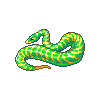
Jazi - Posts: 3850
- Joined: Sat Jul 03, 2010 3:07 am
- My pets
- My items
- My wishlist
- My gallery
- My scenes
- My dressups
- Trade with me
Re: Cat Chat
Never posted on this thread before, but here goes!
I got some great photos of my kitty Oreo today, just after he had been rolling around in the dirt outside! That silly kitty. ovo
I'll just link to my tumblr post because its easier.
We rescued him almost two years ago(the eighteenth of this month will be two years). On his adoption papers they called him an "American Medium-hair", so who knows what breed(s) he has in him! I assume he has a little bit of Maine Coon or something else large perhaps, just because of his size, though definitely not full. At a healthy weight he is around 18 lbs(which is what he first came to us) though he gained a little weight after we adopted him, and despite a strict diet and me making sure he is getting lots of exercise he is still around the 20 pound mark. He came neutered, of course, and was also declawed, so unfortunately I cannot give him free roam of the outdoors. He does have free reign in our backyard since it is fenced, though, and I have a harness and leash which he loves to be walked on. c:
He is around six years old now, though I don't know his exact birth date. He is definitely my baby. <3
I got some great photos of my kitty Oreo today, just after he had been rolling around in the dirt outside! That silly kitty. ovo
I'll just link to my tumblr post because its easier.
We rescued him almost two years ago(the eighteenth of this month will be two years). On his adoption papers they called him an "American Medium-hair", so who knows what breed(s) he has in him! I assume he has a little bit of Maine Coon or something else large perhaps, just because of his size, though definitely not full. At a healthy weight he is around 18 lbs(which is what he first came to us) though he gained a little weight after we adopted him, and despite a strict diet and me making sure he is getting lots of exercise he is still around the 20 pound mark. He came neutered, of course, and was also declawed, so unfortunately I cannot give him free roam of the outdoors. He does have free reign in our backyard since it is fenced, though, and I have a harness and leash which he loves to be walked on. c:
He is around six years old now, though I don't know his exact birth date. He is definitely my baby. <3
-

Duh - Posts: 4053
- Joined: Sat Apr 04, 2009 12:34 pm
- My pets
- My items
- My wishlist
- My gallery
- My scenes
- My dressups
- Trade with me
-

jiko089 - Posts: 4599
- Joined: Wed Oct 12, 2011 1:48 pm
- My pets
- My items
- My wishlist
- My gallery
- My scenes
- My dressups
- Trade with me
-

daisyflower143 - Posts: 204
- Joined: Sun Sep 02, 2012 5:32 pm
- My pets
- My items
- My wishlist
- My gallery
- My scenes
- My dressups
- Trade with me
Re: Cat Chat
my cat has been over protective since i was away for a night anyone els have a cat like this
-

blazesong - Posts: 20654
- Joined: Sun Feb 28, 2010 10:56 am
- My pets
- My items
- My wishlist
- My gallery
- My scenes
- My dressups
- Trade with me
Re: Cat Chat
Jazi wrote:Purrsian wrote:i've never heard of a cat that weighs thirty pounds with no wild blood unless it's overweight, but i guess a male F1 Savannah could achieve that weight.
Yeah, like most of the asian street cats look somewhat alike, and in the cat book poems the khao manee, si-sawat, and all the other cats look relatively the same, and all the british street cats look relatively the same (classic tabby pattern, cobby build) and african cats have the same look and build too. (many of them have pointed bicolor, and a heavyish but lighter than british shorthair build, like a sokoke.)
What's an arabian mau? (cross between Abyssinian and Egyptian mau?)
Wow sorry, I hadn't seen this til just now. The largest breeds (that I'm aware of) without wildcat blood are Maine Coon, Siberian, Norwegian Forest Cat, and Ragdoll. Maine Coons (intact males, that is. neutered males tend to be lighter) can get up to about 25lbs on average, meaning some are even larger than that! Which is why it bugs me when someone has a darker tabby longhair and it's like 9lbs and they call it a Coon... nooooo it's waaaaaay too small.
Yup, and American street cats tend to be slightly less cobby than the British street cats, but not as long and slender as the African or Asian ones. I'd be interested to see if Australian and Russian ferals are similar to any of the other demographics. They all revert back to a specific "type" for their respective area but because they're all mixes of who knows how many breeds they can range greatly in size and color. My own moggie Saffron is about 8lbs at her healthy weight (at 10 she's noticeably obese), my childhood cats were Nala who was 12lbs at healthy weight (feral rescue) and Rusty who was about 15lbs at healthy weight (former barn cat). Rusty was incredibly cobby, but Nala and Saff both have a lighter "average" build. My sister's cat Pumpkin is about 9lbs at healthy weight, but her build is much lighter and she's taller than Saff, so she looks thinner. She's also got the modern Siamese elongated face, so she's probably got one of the Asian breeds influencing her structure.
Oh the size differences in moggy cats, even ones from the same country

Reese was just under a year old when that picture was taken. Boo was full grown. He's a BIG cat. But Reese's smaller than most. Boo was adopted from a Houston, Texas shelter as a kitten and Reese came from a friend here in Maine who let their intact female roam. I should see about getting an updated picture of them together, this is years old.
"Only ignorance! Only ignorance! How can you talk about only ignorance? Don't you know that it is the worst thing in the world, next to wickedness? - and which does the most mischief, heaven only knows. If people can say 'Oh! I did not know, I did not mean any harm,' they think it is all right."
~ Black Beauty by Anna Sewell
~ Black Beauty by Anna Sewell
-

Saracirce - Posts: 5161
- Joined: Fri Oct 30, 2009 9:34 am
- My pets
- My items
- My wishlist
- My gallery
- My scenes
- My dressups
- Trade with me
Re: Cat Chat
Cats are awesome! I have two, I have Honey, who was a stray, she is an orange tabby with a white chin and green eyes. And Peanut, Honey's son, he is a tan kitty with a white chin like Honey's and gold eyes.
Peanut is a Ragdoll mix for sure, he's big, fluffy, and flops over when you pick him up.
Honey is a... I really don't know, she's also fluffy, small, and really grumpy all the time.
Peanut is so sweet, you can hold him for about an hour and he just sits there!
Honey, ............ to make it short I'm not sure how the vets handled her..............
Peanut is a Ragdoll mix for sure, he's big, fluffy, and flops over when you pick him up.
Honey is a... I really don't know, she's also fluffy, small, and really grumpy all the time.
Peanut is so sweet, you can hold him for about an hour and he just sits there!
Honey, ............ to make it short I'm not sure how the vets handled her..............
-

reanimator - Posts: 6098
- Joined: Wed Aug 15, 2012 4:30 am
- My pets
- My items
- My wishlist
- My gallery
- My scenes
- My dressups
- Trade with me
Re: Cat Chat
that dosnt make him a ragdoll
Jazi wrote:What breed is my cat?
Unlike dogs which are often 2-5 distinct breeds when you adopt or buy a mix, most rescued cats are not 1 or 2 or 5 breeds but tend to be closer to 15-20. Dogs have been domesticated and split into separate breeds for longer, and most dog breeds were bred for a rigid look, purpose, and personality. Contrasting that, most cat breeds were bred for looks first and personality last. Many cat breeds started because someone picked up a unique kitten from a barn and decided to breed for that kitten's traits, whether it's multiple toes or a special fur texture or a pretty color. As a result, most cats have a bit of nearly every breed lurking in them. Because of this, we have blue cats that are not Russian Blues, white cats with dark noses and tails that are not Siamese or Ragdolls, and longhair tabbies that are not Maine Coons.
With cat enthusiasts, a cat without papers can only be a moggie, which is a fancy word for a mutt-cat. In the United States we call them Domestic Shorthairs, Domestic Mediumhairs, and Domestic Longhairs. Either way, if your cat did not come with papers stating a specific breed, your cat is not of any particular breed but of many. It doesn't matter what the shelter said, what the "breeder" said, what the friend who gave the cat to you said. If there are no papers, your cat has no breed. This keeps people from picking up a random blue kitten off the streets, breeding it with another blue cat, and selling the kittens as "Russian Blues".
In addition, most moggies aren't just 2 or 3 breeds. Purebred (and papered) cats are expensive, some even moreso than dogs, especially the wildcat hybrids (Bengals, Savannahs, Caracats, etc). An F1 (first generation, 50% Serval 50% cat) Savannah can cost more than $5000! That's more than even most show dogs! Because of the huge price, people with actually papered cats tend to follow the breeder's orders and spay/neuter their pets. If they do end up mixing breeds, it's usually to create another breed and called by another name than just combining the two (Sphynx x American Curl = Elf Cat, unlike Poodle x Lab = Labradoodle). And these kittens aren't sold to some Joe Public off the street for $5, these also would have a large pricetag and be sold to homes that are interested in continuing the breed.
Also remember, a lot of people mislabel cat breeds because they're going by coat or color! A blue kitten is not a Russian Blue, it's just a blue kitten. A longhaired tabby is not a Maine Coon, it's just a tabby with longer fur. A lot of people even get mixed up and call Domestic Shorthairs "American Shorthairs". Each individual breed has specific characteristics which help identify them from other breeds, and a lot of people only look at one trait and say "my cat is this".
So what breed of cat do you have? If you have to ask that question, it's probably a moggie. But that's okay! Moggies come in a huge variety of colors, coats, shapes, and sizes! They have a wide range of personalities and they can be as shortlived as 12yrs or as longlived as 20+! Some moggies are playful and loving just like a dog, others are "typical cat" and only want affection when they ask for it.
-

blazesong - Posts: 20654
- Joined: Sun Feb 28, 2010 10:56 am
- My pets
- My items
- My wishlist
- My gallery
- My scenes
- My dressups
- Trade with me
Re: Cat Chat
My poor kitty has to stay the night at the vet tonight ):
I took her in today thinking she had worms or something, and when the x-rayed, they found something else in her stomach. We're not sure what it is, but it's definitely not worms. My stupid darling probably ate something that she shouldn't have, and I'm sure the vet will figure it out, but I'm still incredibly worried about her...
I took her in today thinking she had worms or something, and when the x-rayed, they found something else in her stomach. We're not sure what it is, but it's definitely not worms. My stupid darling probably ate something that she shouldn't have, and I'm sure the vet will figure it out, but I'm still incredibly worried about her...
-

Typical Aquarius - Posts: 2350
- Joined: Sun Jun 19, 2011 2:08 pm
- My pets
- My items
- My wishlist
- My gallery
- My scenes
- My dressups
- Trade with me
Who is online
Users browsing this forum: No registered users and 0 guests





















